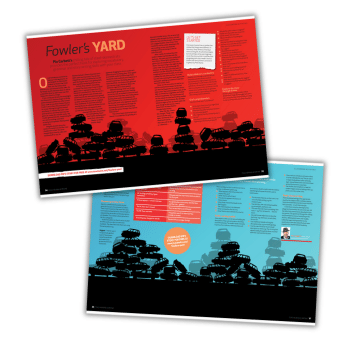Creative writing KS2 – using the dramatic imagination

Harness the artists' 'secret code' to help pupils develop a gripping narrative…

- by Tim Taylor

How can we support students to write creatively? It is a great teaching conundrum.
We have all been there: spending hours setting up a stimulating scenario – a story-starter, an intriguing image, a dramatic moment – in the hope of grabbing the children’s imagination and inspiring them to write a gripping narrative.
Only to sit down later and read something truly depressing like, I walked to the door, I was scared. Then I opened the door and a monster attacked me. I died. Aagh!
It is easy to get frustrated (I know I have) but there is a solution: it is called the dramatic imagination.
The dramatic imagination is the secret code of artists. It is used in literature, film, theatre, art, and music. It is the vocabulary of mood and atmosphere, the language of setting and environment, the magic key to ‘show, not tell’. And we can teach it to children.
What is the dramatic imagination?
There are six dimensions to the dramatic imagination: sound/silence; movement/stillness; darkness/light. You might like to try them yourself.
Imagine standing in a room in an old house. It is night-time, on one side of the room is a paned window, on the other, a single door. Now describe where the light comes from and where it falls in the room. Is it from the moon outside, casting a silver light on the floor? Or a flicking candle on a table near the door?
Describe what sounds you can hear: the wind outside; the creak of the floorboards; the sound of your heart beating? Now take a step towards the door, describe your movement.
Describe the stillness in the room; the darkness; the silence. Now reach out to take hold of the door handle, describe the response from your body, the blood rushing through your veins, the slow movement of your arm, the stiffness of your hand…
How much did you write? If you are like me (and the students who learn how to do this) it will have been a lot. The story hasn’t progressed far, but there is a sense of atmosphere, of building suspense, of fear.
You can imagine it as a film: the music slowly building, the screech of violins, the close-up of the actor’s hand. This is the power of imagination.
We can start using the dramatic imagination as soon as children come to school. In fact, it is one of the great features of the six dimensions that we already use them as a natural part of our teaching whenever we read a book to a class or share a picture.
They are all around us, all the time, the trick is to point them out, and later to teach them explicitly.
How to use it in the classroom
I first did this successfully with a Year 2 class using Ted Hughes’ The Iron Man. I started by writing the six dimensions on a large sheet of paper and asking the students to point them out as we read through the story (projecting the text onto the whiteboard):
The wind sang [sound] through his iron fingers [movement]. His great iron head, shaped like a dustbin but as big as a bedroom, slowly turned to the right [movement], slowly turned to the left [movement]. His iron ears turned, this way, that way [movement]. He was hearing the sea [sound]. His eyes, like headlamps [light], glowed white, then red, then infrared [light], searching the sea. Never before had the Iron Man seen the sea.
I then supported the students to use the dimensions in their own writing, first while doing guided writing, and then in independent writing. Giving them feedback such as: “You’ve got a sense of movement and sound here, but where is the stillness and silence?”, it was surprising how quickly the children picked them up and how effectively using them improved their writing.
Later, when I taught Year 6 the effect was quicker still and even more effective.
The dimensions are, in my experience, something children understand intuitively and begin to apply almost as soon as they become competent writers.
They often find joy in using a ‘secret code’ used by expert writers, artists, and filmmakers, and the six dimensions can transform children’s writing, giving them a strategy to move beyond ‘then/and’ stories, as well as providing a vocabulary for teachers to provide practical feedback which the children can use to develop their story-telling skills.
It is exciting to use too, and you’ll have fun incorporating it into your own teaching – teaching as storytelling:
The old house stood alone at the top of the hill, no one had been inside for years. Nothing moved except for the dark figures of animals scurrying across its rotten floorboards, nothing lived in the rooms but shadows filling every corner and every space. The wind and the sun and the rain had not been kind to the house’s paintwork which had once been bright and beautiful, but now lay still on the ground like a pale snow. “Why,” I asked myself, “had I promised to spend a night here, alone?”
Tim Taylor is a freelance teacher, and author of A Beginner’s Guide to Mantle of the Expert. Follow Tim on Twitter @imagineinquiry. Read more about building suspense in writing in KS2.







